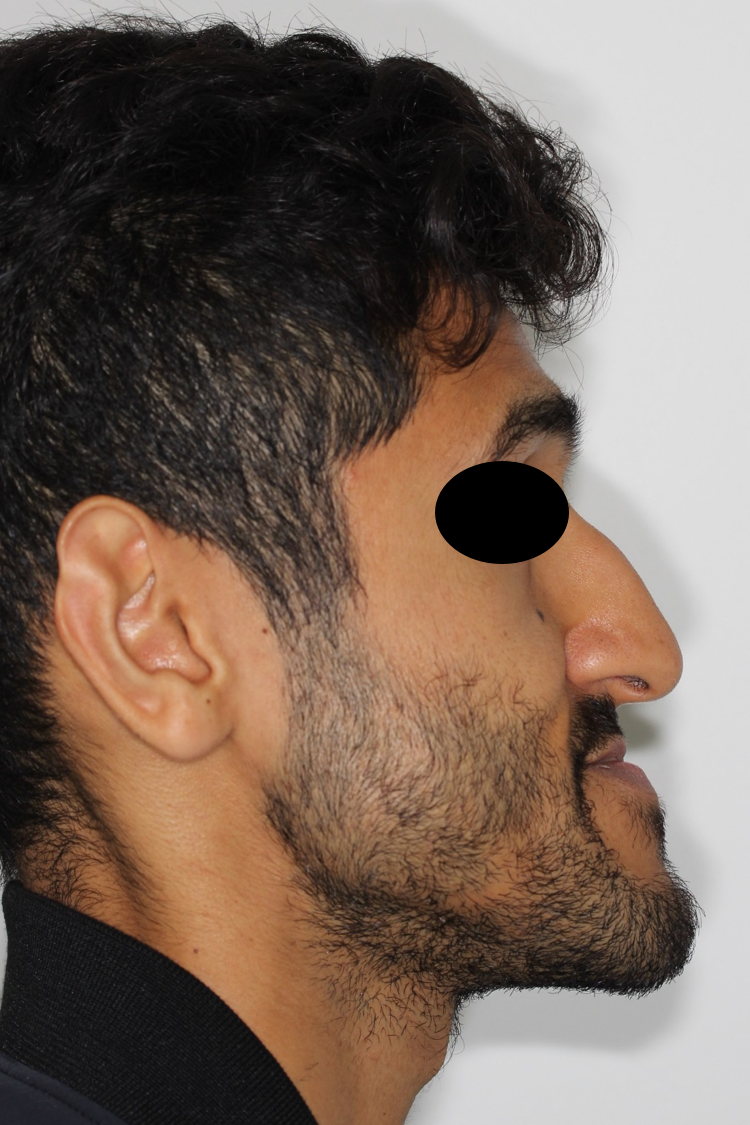
Orthognathic surgery
Human beings come in many different shapes and sizes, for example one person may grow to be 2 meters in height and another person may grow to be 1.6 meters in height. Neither person is ‘incorrect’ and both display simply different variations of growth and development.
In a similar manner the jaw bones and the bones of one’s facial skeleton may grow and develop in a variety of different sizes and shapes in different people as is governed by their individual genetics. As teeth are contained within their supporting upper and lower jaw bones, the size, shape and position of the jaw bones relative to one another may have a significant affect upon the bite as well as upon facial aesthetics and function.
In some cases, an ‘imbalance’ in the relative growth on one’s jaw bones (for example a small upper jaw bone opposing a large or asymmetric lower jaw bone) may significantly affect the occlusion (the ‘bite’). In cases where this ‘imbalance’ in growth is very significant then the only way in which the bite may be fully corrected may be with orthodontic treatment combined with Orthognathic surgery - ‘Jaw surgery’.
Combined orthodontic treatment and orthognathic surgery is a multi-disciplinary form of care which involves orthodontic treatment under the care of a suitably qualified expert orthodontist (in the United Kingdom usually a GDC registered specialist orthodontist of consultant grade) and a expert oral and maxillofacial surgeon (in the United Kingdom usually a GMC registered oral and maxillofacial surgeon of consultant grade). Treatment is planned in detail under the care of both clinicians.
The purpose of orthodontic treatment in orthognathic surgical cases is to ‘decompensate’ the existing tooth positions (which have usually been tilted under the pressure of the lips and facial soft tissues to partially disguise the underlying jaw positions) and to position the teeth in the ideal positions in the upper and lower jaw bones such as to allow for jaw surgery to be undertaken to correct the jaw position. Following surgery orthodontic treatment is continued to precisely optimize the details and function of the bite.
Orthognathic surgery is usually performed inside the mouth, so no facial scars show on the chin, jaw or around the mouth. Once surgical movement of the jaw bones is completed, small bone plates and screws are be used to secure the bones into their new position. In some cases, extra bone may be added to the jaw with bone being grafted from the hip bone or rib. In other cases, bone may be reshaped to provide a better fit. Jaw surgery may be performed on the upper jaw, lower jaw, chin or any combination of these. Orthognathic surgery is usually undertaken after facial growth stops, usually around ages 17 to 18 years for females and ages 18 to 20 years for males.
Orthognathic surgery is a significant surgical procedure and so most patients should plan to take one to two weeks off of work or study to rest and recover. Your first few weeks of recovery will involve dietary changes and restrictions. All specific post-operative instructions will be provided during consultation following detailed diagnosis and treatment planning of your individual case.
Dr. O’ Connor is a consultant lead clinician for the orthodontic and orthognathic treatment service in Guys and St. Thomas’ NHS Foundation Trust. Dr. O’ Connor routinely provides combined orthodontic and orthognathic surgical treatment in private practice in London for patients both from the United Kingdom and travelling from abroad. Dr. O’ Connor works alongside several expert consultant oral and maxillofacial surgical colleagues.
Orthognathic surgery may help to:
✦ Make biting and eating easier and improve chewing function overall
✦ Minimize excessive wear and breakdown of the teeth
✦ Correct bite fit or jaw closure issues, such as when the molars touch but the front teeth don't touch (open bite)
✦ Correct facial imbalance (asymmetry), such as small chins, underbites, overbites and crossbites
✦ Improve the ability of the lips to fully close comfortably
✦ Relieve pain caused by temporomandibular joint (TMJ) disorder and other jaw problems
✦ Correct or improve problems with swallowing or speech
✦ Repair facial injury or birth defects
✦ Provide relief of symptoms of obstructive sleep apnea










